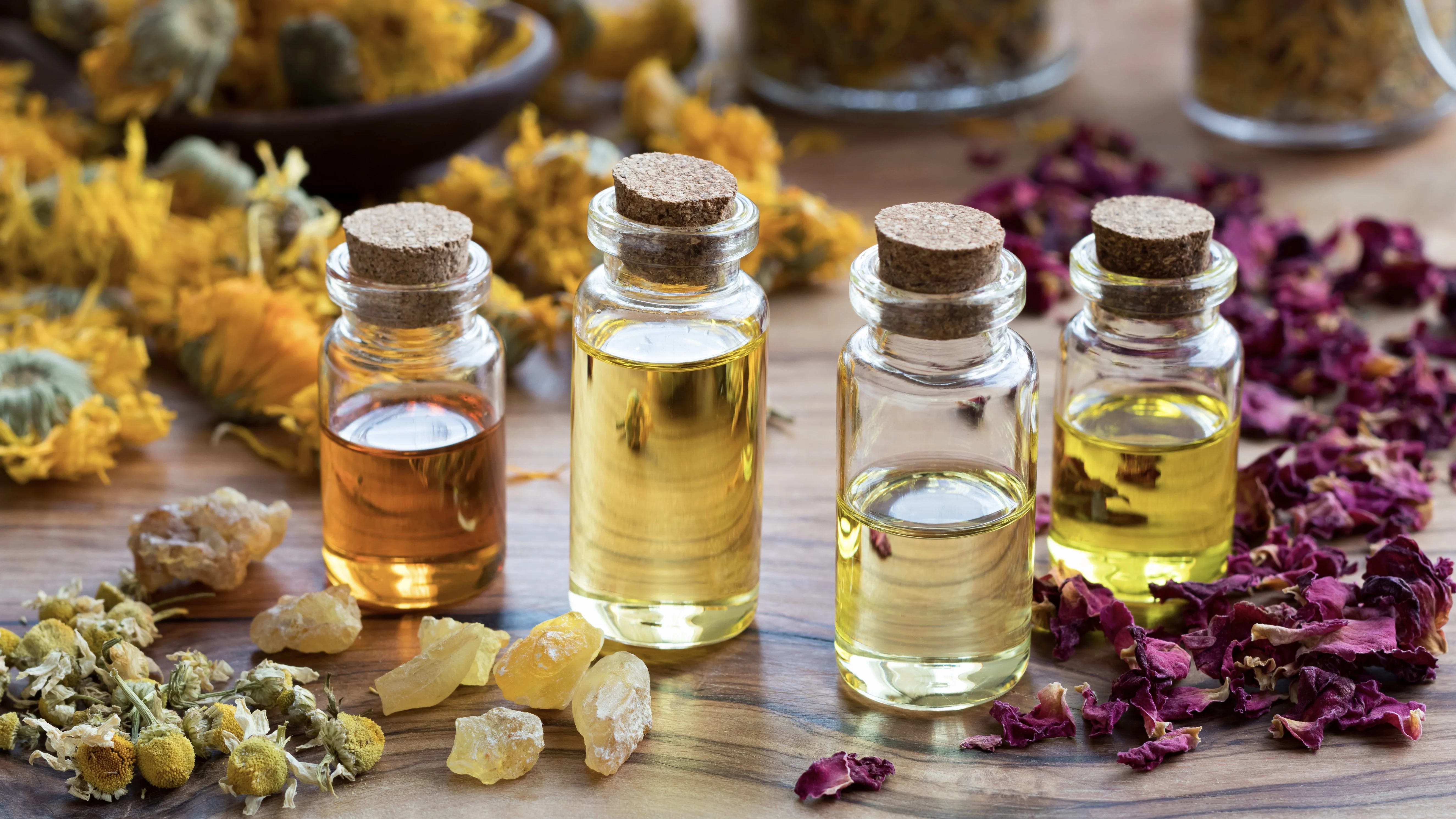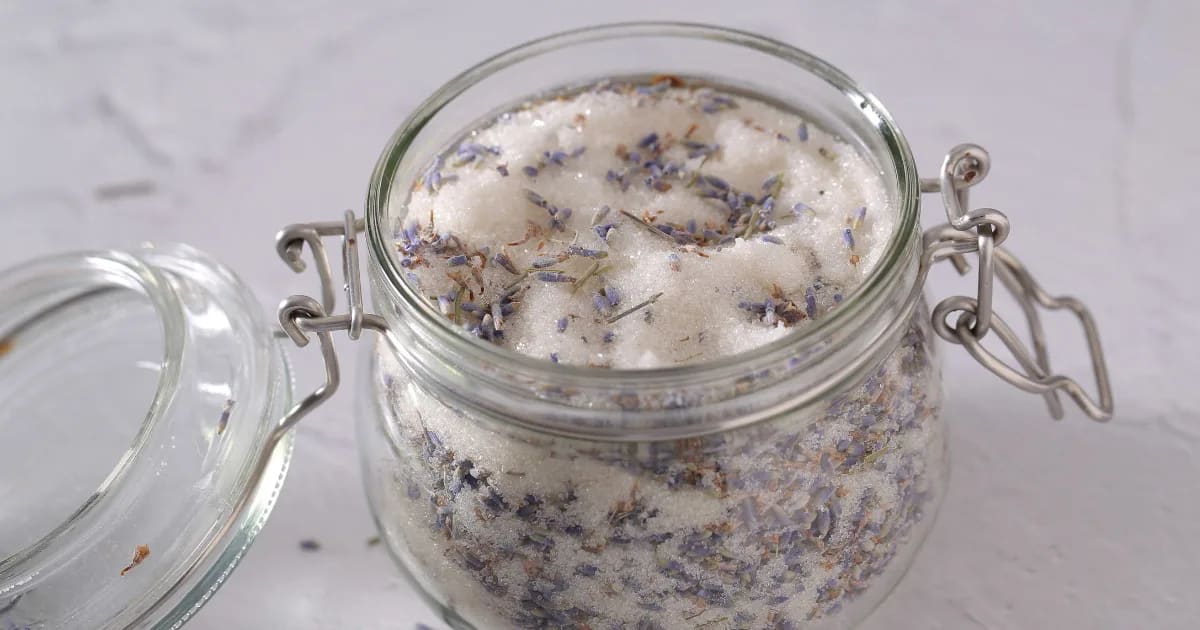Essential Oils for Cold & Flu Symptom Relief

Restoring Your Body’s Balance
There’s no mistaking the feeling of an oncoming cold or the flu—the scratchy throat, the stuffy nose, the wave of exhaustion that seems to settle into your bones.
Essential oils are some of my favorite allies—not because they magically cure a cold (wouldn’t that be nice?), but because they help soothe the discomfort, and can even speed recovery. They help make the whole experience a little more bearable.
In this post, I’ll share three simple aromatherapy recipes for cold and flu symptoms:
An inhaler for sore throats and coughs
A chest rub to ease congestion
A massage oil for muscle and joint aches
While essential oils won’t replace rest, hydration, and good nutrition, they can make the healing process more comfortable. Let’s create some simple yet powerful remedies to support you through the cold and flu season.
Throat Rescue Inhaler
This simple inhaler blend is designed to ease throat irritation, calm coughing fits, and provide gentle immune support. Each essential oil brings something special to the mix—soothing inflammation, relaxing throat muscles, and supporting respiratory wellness.
Why These Oils?
Black Pepper (Piper nigrum): A natural antispasmodic (Mehmood & Gilani, 2010), black pepper oil can help relax throat muscles and ease coughs.
Sandalwood (Santalum album): Sandalwood oil has a special affinity for the throat! Its anti-inflammatory, stress-soothing effects explain why it’s a traditional favorite for coughs (Erligmann, 2001).
Sweet Orange (Citrus sinensis): Rich in d-limonene, sweet orange oil offers anti-inflammatory benefits for sore throats and irritated airways (Santana et al., 2020). Its bright, uplifting aroma also gives you an emotional boost!
Thyme ct thymol (Thymus vulgaris ct thymol): This variety of thyme is rich in thymol, a natural compound that can help reduce the urge to cough, especially when inhaled (Gavliakova et al. 2013).
Ingredients
5 drops Black Pepper Oil (Piper nigrum)
5 drops Sandalwood Oil (Santalum album)
5 drops Sweet Orange Oil (Citrus sinensis)
3 drops Thyme ct Thymol Oil (Thymus vulgaris ct thymol)
Directions
Add the essential oils to the cotton wick of an inhaler.
Assemble the inhaler and cap it tightly.
Inhale deeply as needed to reduce coughing and soothe a sore, tender throat.
Learn more about making an aromatherapy inhaler here.
Breathe Clear Chest Rub
A soothing chest rub can work wonders by opening the airways and breaking up mucus. This blend brings together powerhouse essential oils that work synergistically to clear nasal passages, calm inflammation, and support immune function.
Why These Oils?
Eucalyptus (Eucalyptus globulus): One of the best-known oils for respiratory health, eucalyptus is rich in 1,8-cineole, a compound that helps break up mucus and allows for easier breathing (Price & Price, 2007). It’s also a main ingredient in this popular chest rub recipe.
Hemlock (Tsuga canadensis): A respiratory powerhouse, hemlock oil can support clear breathing and has antimicrobial properties (Salehi et al., 2019). It’s often used to open up the airways and promote deep, calming inhales.
White Pine (Pinus strobus): A strong yet gentle respiratory support oil, white pine contains α- and β-pinene, compounds known for their decongestant and expectorant effects (Salehi et al., 2019).
Ingredients
1.75 fl oz (52 ml) Sweet Almond Oil (Prunus dulcis)
0.25 oz (7 gm) Beeswax (Cera flava)
8 drops Eucalyptus Oil (Eucalyptus globulus)
5 drops Hemlock Oil (Tsuga canadensis)
5 drops White Pine Oil (Pinus strobus)
Directions
You’ll need a 2 oz (60 ml) glass jar for this recipe.
Prepare a double boiler: Place a pyrex measuring cup inside a soup pot filled with about ¼ of gently simmering water. This will serve as your double boiler.
Melt the beeswax: Add the beeswax to the pyrex and allow it to melt completely.
Incorporate the oils: Once the beeswax has melted, add the sweet almond oil to the pyrex. Stir gently as they melt together.
Remove from heat and add essential oils: Stir the essential oils thoroughly.
Pour and set: Transfer the mixture into a glass or PET jar and cap it. Allow it to cool and grow firm before applying it to the upper chest and neck.
Safety Notes: At Aromahead, we avoid using eucalyptus near the faces and noses of children younger than 5. It’s a strong oil and can overwhelm their systems. A good substitute is tea tree, Melaleuca alternifolia.
Deep Comfort Oil for Muscles & Joints
This rich, nourishing salve takes the powerful muscle-soothing properties of juniper berry, white sage, and peppermint essential oils and blends them into a long-lasting balm. Perfect for massaging into sore muscles, tired joints, and areas of tension.
Why These Oils?
Juniper Berry (Juniperus communis): Juniper berry is one of my favorite oils for muscles and joints! I’ve included it in several recipes, such as this one from The Aromahead Blog. The oil contains compounds (including α-pinene) that can help reduce swelling and ease muscle discomfort (Akkol et al., 2009; Bais et al., 2017).
White Sage (Salvia apiana): Traditionally used for its anti-inflammatory effects, white sage contains 1,8-cineole, a component with analgesic, antispasmodic, and circulation-supporting properties (Buchbauer, 1993, Santos & Rao, 2000).
Peppermint (Mentha × piperita): A cooling oil rich in menthol, peppermint helps relax muscles and release tension (Guimarães et al., 2013).
Arnica (Arnica cordifolia): If you’ve never used arnica before, it’s a time-honored herbal remedy known for its ability to soothe sore muscles, ease tension, and support recovery. Traditionally infused into oil, arnica has been cherished for generations as a natural way to bring comfort to tired, overworked areas—making it a perfect companion to our essential oils for external use on unbroken skin.
Ingredients
1 fl oz (30 ml) Arnica Oil (Arnica cordifolia)
8 drops Juniper Berry Oil (Juniperus communis)
5 drops White Sage Oil (Salvia apiana)
4 drops Peppermint Oil (Mentha × piperita)
Directions
Add the essential oils and arnica oil (or a carrier of your choice) to a 1 oz (30 ml) glass bottle.
Shake gently to thoroughly blend the ingredients.
Massage as needed into sore muscles and joints when you have a cold or the flu.
Get Your Complimentary Winter Immunity Guide
If you love natural remedies and want to keep your immune system strong all winter long, I’ve put together a free PDF guide on Winter Immunity just for you! This guide includes recipes and simple rituals to help you stay resilient through cold and flu season.
Inside, you’ll find:
More essential oil recipes for immune support
Easy immune-boosting rituals to incorporate daily
In-depth explanations of 5 top essential oils for immunity and why they work
Download your free copy now and keep yourself and your family feeling vibrant all season long!
My Takeaway
There’s something comforting about the ritual of caring for yourself when you’re under the weather—the warm steam rising from a cup of tea, the familiar scent of eucalyptus curling through the air, the way a soothing balm melts into your skin like a whispered reassurance: You’ll feel better soon.
Essential oils won’t replace the deep restoration of rest, nourishment, and time—but they will make the journey more comfortable, gently nudging your body toward healing.
I hope these blends bring you relief when you need it most. May they help you breathe a little deeper, sleep a little sounder, and remind you that even in the midst of sniffles and aches, your body is always working toward balance.
REFERENCES
Baylac S, Racine P (2003). Inhibition of 5-lipoxygenase by essential oils and other natural fragrant extracts. International Journal of Aromatherapy 13 (2/3): 138-142
Buchbauer, G. (1993) Biological Effects and Modes of Action of Essential Oils. International Journal of Aromatherapy 5, 1, 11-14.
Erligmann, A. (2001) Sandalwood oils. International Journal of Aromatherapy 11, 4, 186-192.
Gavliakova S., Biringerova, Z., Hanuskova, E., Buday, T., Poliacek, I., and Jana, P. (2013). Urge to cough is significantly abolished by nasal thymol application. European Respiratory Journal. 42(57): P1594
Mehmood, M. H., & Gilani, A. H. (2010). Pharmacological basis for the medicinal use of black pepper and piperine in gastrointestinal disorders. Journal of medicinal food, 13(5), 1086–1096. https://doi.org/10.1089/jmf.2010.1065
Price, S. and Price, L (2007) Aromatherapy for Health Professionals 3rd Edition. Edinburgh: Churchill Livingstone.
Sadraei H, Asghari GR, Hajhashemi V et al. (2001) Spasmolytic activity of essential oil and various extracts of Ferula gummosa Boiss. on ileum contractions. Phytomedicine 8,370-376.
Salehi B, Upadhyay S, Erdogan Orhan I, et al. Therapeutic Potential of α- and β-Pinene: A Miracle Gift of Nature. Biomolecules. 2019;9(11):738. Published 2019 Nov 14. doi:10.3390/biom9110738
Santana, H. S. R., de Carvalho, F. O., Silva, E. R., Santos, N. G. L., Shanmugam, S., Santos, D. N., Wisniewski, J. O., Junior, J. S. C., Nunes, P. S., Araujo, A. A. S., de Albuquerque Junior, R. L. C., & Dos Santos, M. R. V. (2020). Anti-Inflammatory Activity of Limonene in the Prevention and Control of Injuries in the Respiratory System: A Systematic Review. Current pharmaceutical design, 26(18), 2182–2191. https://doi.org/10.2174/1381612826666200320130443
Santos FA, Rao VS (2000) Antiinflammatory and antinociceptive effects of 1,8-cineole a terpenoid oxide present in many plant essential oils. Phytotherapy Research 14:240-244.






